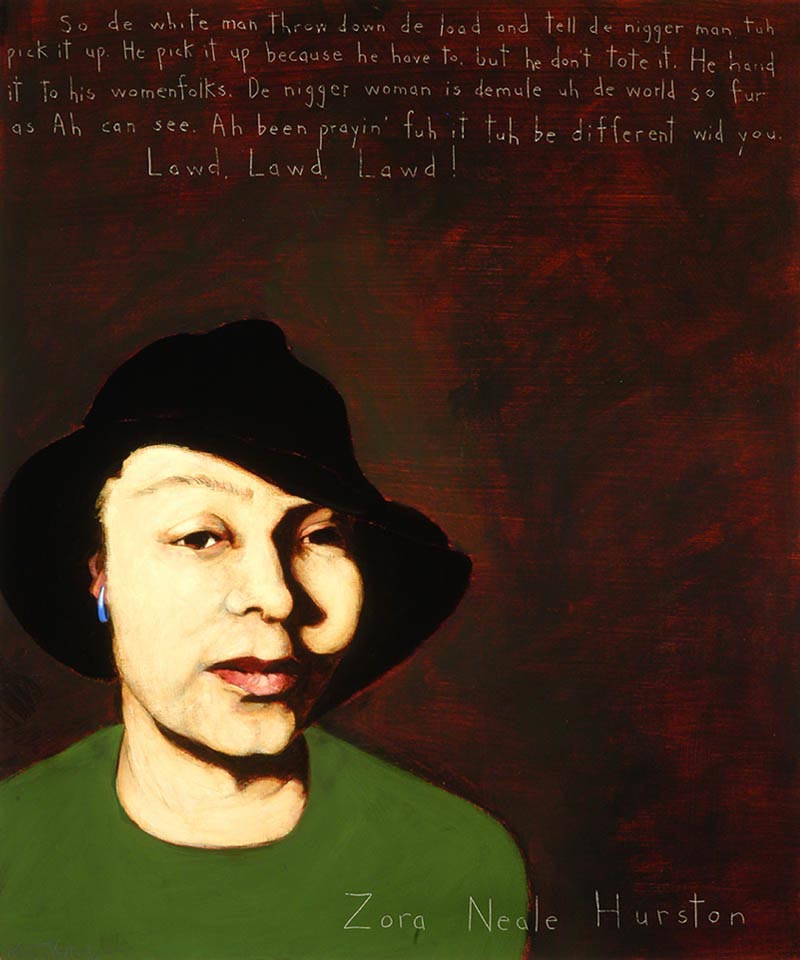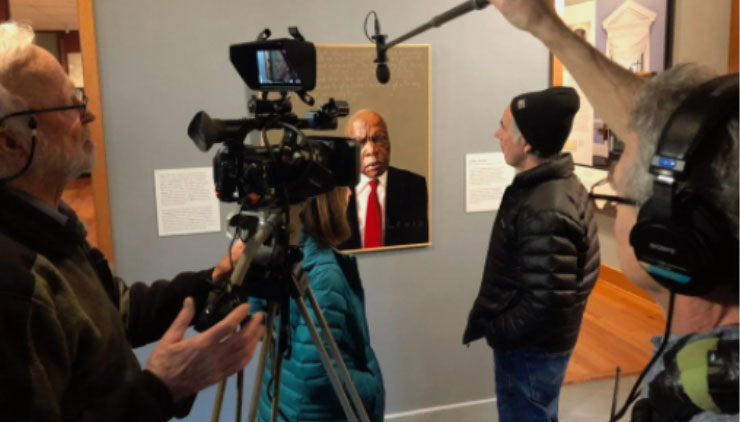
Zora Neale Hurston
Author, Folklorist : 1901-1960
“‘So de white man throw down de load and tell de nigger man tuh pick it up. He pick it up because he have to, but he don’t tote it. He hand it to his womenfolks. De nigger woman is de mule uh de world so fur as Ah can see. Ah been prayin’ fuh it tuh be different wid you. Lawd, Lawd, Lawd’. — From Their Eyes Were Watching God”
Biography
Born and reared in an all-black, self-governed town in central Florida, Zora Neale Hurston absorbed the rich history of centuries-old folk tales and a distinctive southern black culture. After attending Howard University, where she began writing short stories, Hurston won a scholarship to study anthropology at Barnard College in New York. A later fellowship gave her the means to collect folklore in her native South and in the Caribbean. Out of this experience, her fiction evolved to depict characters within the American Negro folk idiom who grappled with racial inequities in the context of the universal human condition.
Through four years of ethnographic studies, Hurston collected the folktales, songs, sermons and games that would be published in Mules and Men (1935), and show the inter-relationship of humor and tragedy in the lives of black people. As an important part of the Harlem Renaissance (1920-1940), Hurston has been called the “foremother” of a generation of black American women writers. In her most important novel, Their Eyes Were Watching God (1937), the narrator offers this view of existence: “Through indiscriminate suffering men know fear, and fear is the most divine emotion. It is the stones for altars and the beginning of wisdom.” Recognition of fear did not mean defeat for Hurston, as this statement by one of her characters shows: “Grab the broom of anger and drive off the beast of fear.”
Zora Neale Hurston published three novels, three books of folklore, short stories, an autobiography, a one-act play and several librettos; nonetheless, she died, largely forgotten, in degrading poverty, of which she had written: “There is something about poverty that smells like death. Dead dreams dropping off the heart like leaves in a dry season and rotting around the feet, impulses smothered too long in the fetid air of underground caves. The soul lives in a sickly air. People can be slave-ships in shoes.” Today her depiction of the beauty and wholeness of black American culture is fully appreciated, and her writing and influence have been restored to their rightful place in American letters.
Programs
Americans Who Tell the Truth (AWTT) offers a variety of ways to engage with its portraits and portrait subjects. Host an exhibit, use our free lesson plans and educational programs, or engage with a member of the AWTT team or portrait subjects.

Education
AWTT has educational materials and lesson plans that ask students to grapple with truth, justice, and freedom.

Exhibits & Community Engagement
AWTT encourages community engagement programs and exhibits accompanied by public events that stimulate dialogue around citizenship, education, and activism.